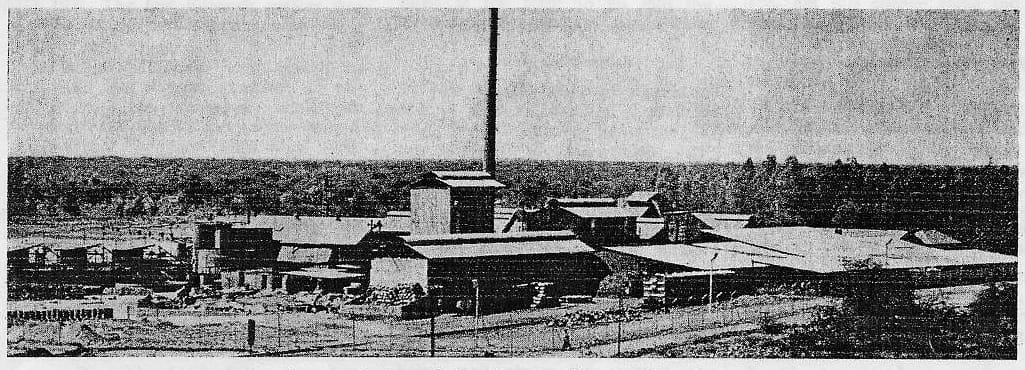To Scrap or Not to Scrap?

The Roasting Plant, Que Que, for thirty four years processed refractory ores for many of the almost three hundred small-workers in the area.
To Scrap or Not to Scrap?
Que Que was mineral rich. This had it’s down side: often antimony, arsenic, bismuth, copper, lead or nickel were associated with the gold making recovery impossible, or very expensive, by direct cyanidisation. Aggregation of the minerals by gravity or flotation followed by roasting the concentrates to remove the metallic substances or change them through oxidation.
At the Globe and Phoenix Mine, which opened in 1900, the upper levels of ore were not difficult to treat, but after a few years sulphide ore was encountered, particularly including antimony (sometimes up to 3%), seriously reducing recovery rates, so shaking tables and a roasting plant were installed.
Later the shaking tables were scrapped for Forwood Down Grinding pans that ground the ore and were also used for recovery of gold by amalgamation (with mercury).
At that time, the slimes were accumulated in dams and weathered before cyaniding, which required expensive ploughing periodically. Three big Edwards roasters were erected 1912. Constant repairs to the roasters hampered efficiency. Fortunately after a few years the antimony content in the ore dropped and the need fell away. These roasters too were scrapped.
Scrap around the Reduction Plant continued to proliferate with the changing ore content and new treatments that were successively introduced.
To Scrap or Not to Scrap?
But many of the nearly three hundred small−workers in the area couldn’t afford or manage these innovations. In 1938 the Minister of Mines, Captain W.S. Senior, was responsible for the opening of the Roasting Plant in Que Que to provide roasting facilities for them. Que Que’s first mayor, John Austen, had generously donated 100 acres conveniently adjacent to the railway siding. The plant would run as a non-profit business subsidized by the Government.
A research program to improve recovery of antimonial concentrates was instituted by Mr. A.G. de Beer, the Manager, in 1956 and two years later an economical method came into use which increased the yield from concentrates from 83% to 91%. The plant began to show a profit and build up a financial reserve. The penalty on antimony content was reduced. A number of small mines reopened.
In Parliament, the chairman of the Select Committee on Public Accounts, Dr. Palley, sought to drop the subsidy in the witching hour of Parliament’s 100th day in session in 1961.
Dr. Hirsch responded “…From being an industry where one wondered whether it would continue till the next year, it now appears to be an industry with a future in which confidence has been built up….I am sure nobody here will push the Minister to jeopardize what has been built-up painstakingly over the years. ”
Mr. Dillon: “…The initiative of the personnel of the Roasting Plant in solving the problems of treating some of our more complex ores had achieved something which will go down in the annals of mining history.”
The Minister of the Treasury and Mines (Hon. C.J. Hatty) “…I could not help thinking about that story—probably apocryphal—of the remark by Sir Winston Churchill… that whenever Mr. Atlee saw anything that was working well he wanted to nationalize it. I could not help feeling…whenever anything nationalized was working very well someone wanted to change it. …We can build the Roasting Plant into much more of a pilot plant for other extracting processes which are either too large for the Metallurgical Laboratory or, perhaps, in too far advanced a state for [it] to handle—in other words, the sort of proposition which is on the threshold of becoming a commercial one but needs to be proved on a reasonable pilot scale method. …In fact I have proposals at the present time…”
Scrapped in 1971, reopened in 74 it closed again in 2000. Over the years the Roasting Plant was responsible for processing thousands of ounces of gold. With gold over $1600 an ounce these days perhaps the time has come to recommission it again.
Many thanks to Bob Atkinson for articles and reports on Rhodesian mining. Quotes from Hansard, June 1961.
